With less than two months remaining before the first Expedition crew took up residence aboard the International Space Station (ISS), during the STS-106 mission the crew of Space Shuttle Atlantis arrived at the facility to prepare it for their arrival. Designed to provide living accommodations for the crew, the Zvezda Service Module, the third element of the growing space station had arrived in July 2000, followed by Progress M1-3, the first cargo resupply vehicle to ISS, on Aug. 8, docking at Zvezda’s aft port. During their eight-day stay at ISS, the seven-member crew of STS-106 transferred supplies to the station, unloaded logistics from the Progress, outfitted the inside of Zvezda with equipment needed by the first Expedition crew, and completed external outfitting during an Extravehicular Activity (EVA) or spacewalk.
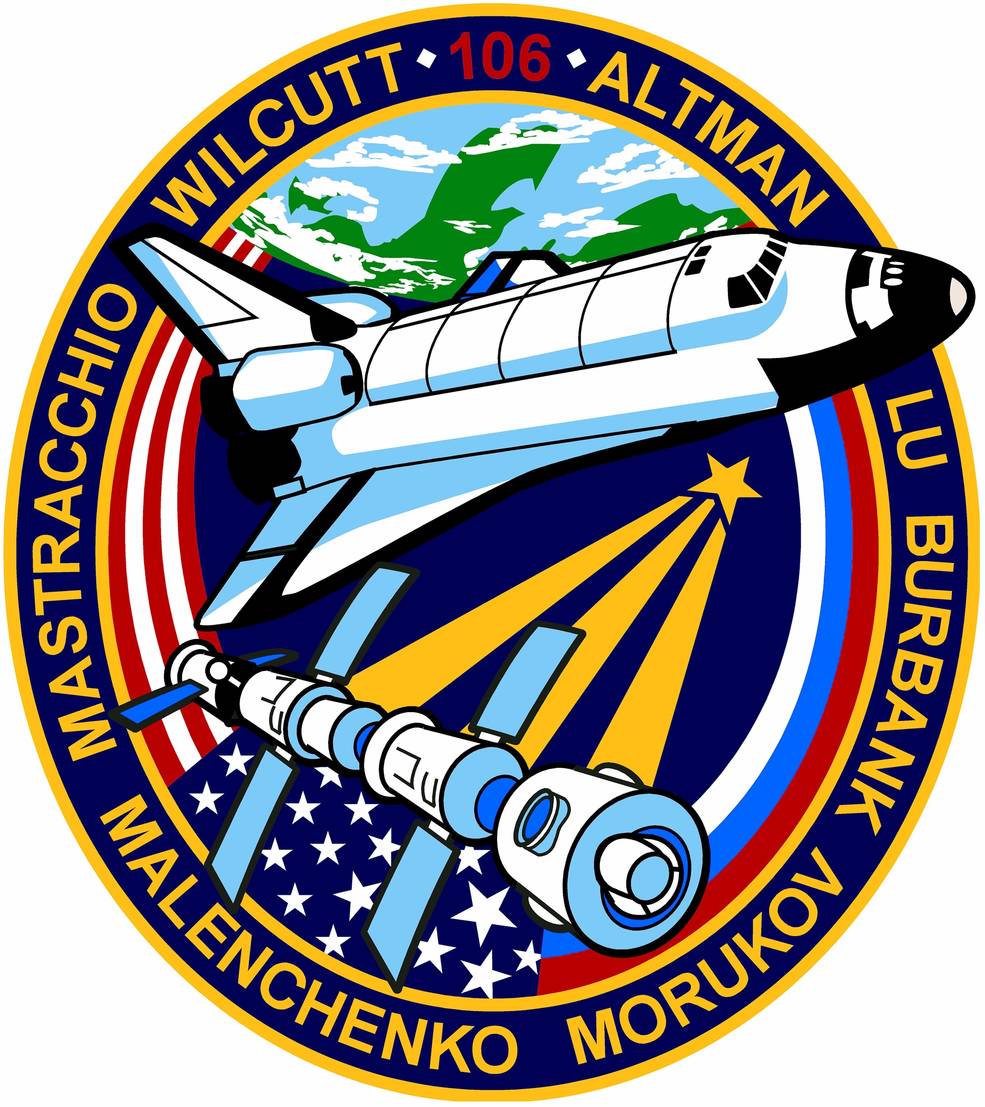
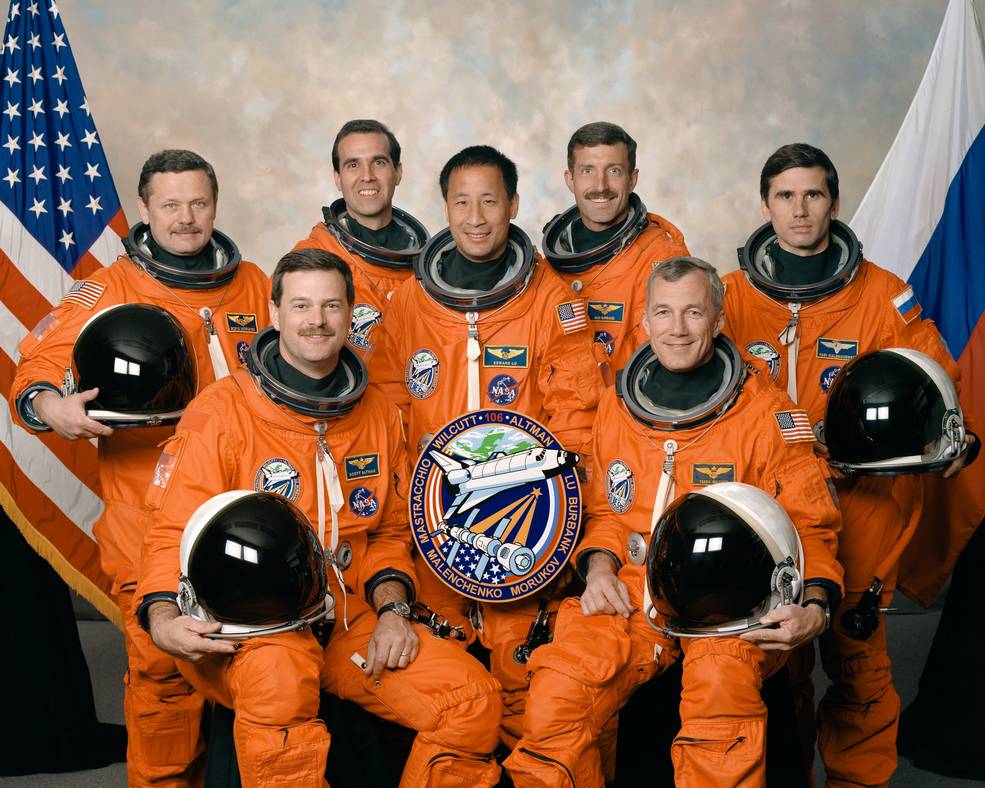
Left: STS-106 crew patch. Right: TS-106 crew photo, left to right,
Morukov, Altman, Mastracchio, Lu, Burbank, Wilcutt, and Malenchenko.
The fourth space shuttle assembly and resupply mission to ISS took off on the morning of Sept. 8, 2000, with its seven-person crew of Commander Terence W. Wilcutt, Pilot Scott D. Altman, and Mission Specialists Edward T. Lu, Richard A. Mastracchio, Daniel C. Burbank, Yuri I. Malenchenko, and Boris V. Morukov. Less than two days after launch, Wilcutt guided Atlantis to a smooth docking with the three-module space station. The STS-106 crew was the first to see Zvezda in space and the first to see the three-module ISS configuration.
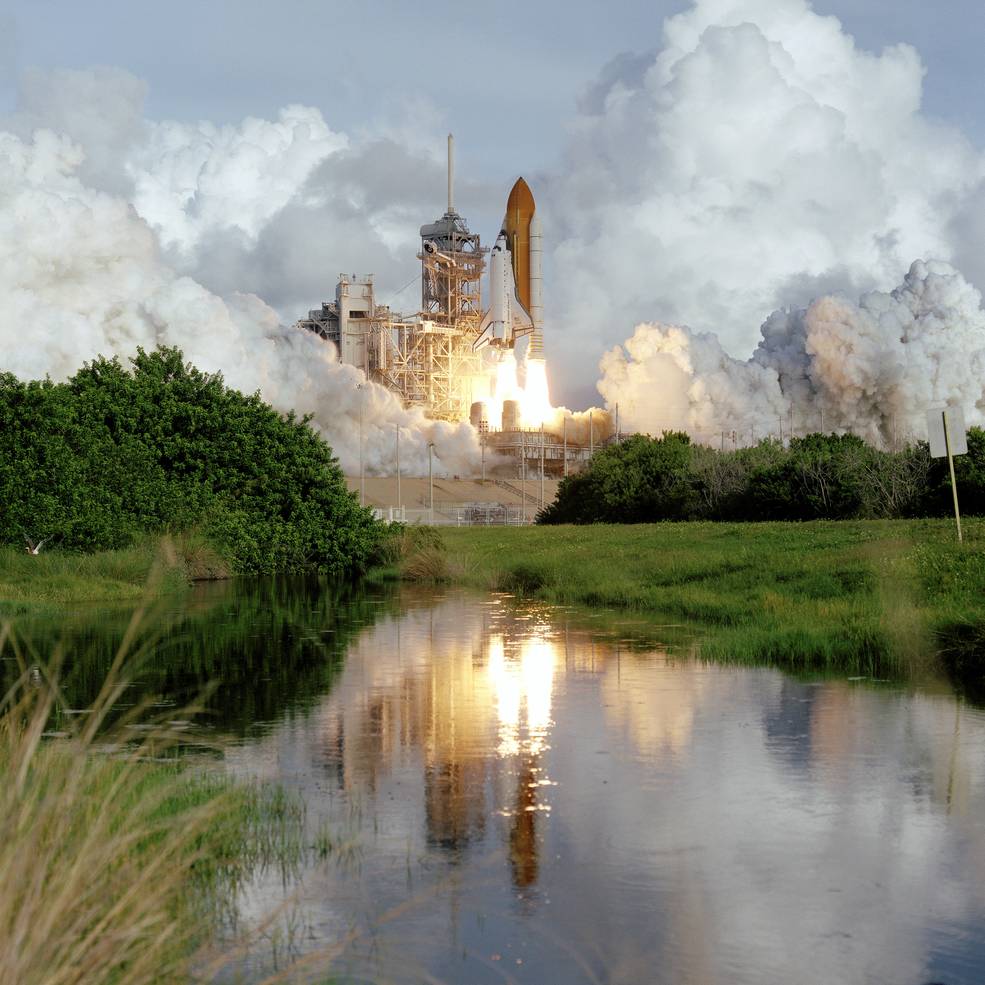
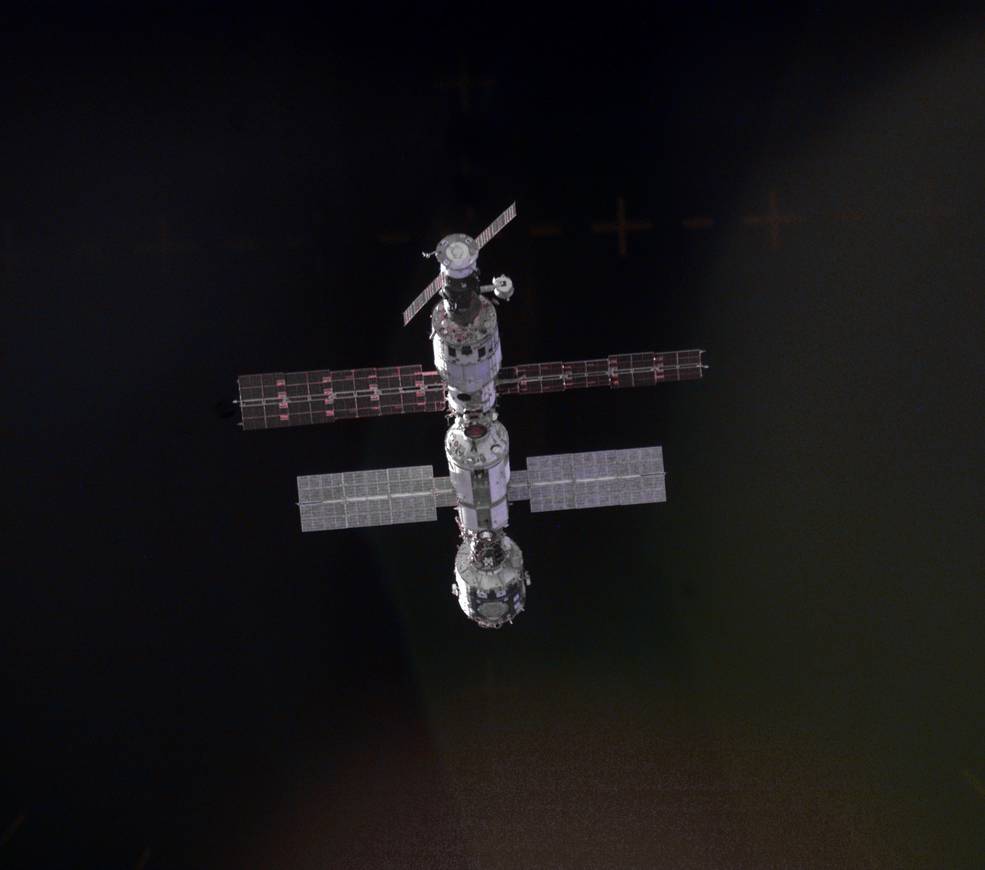
Left: Launch of Atlantis on Shuttle mission STS-106. Right: View of the three-module
ISS from Atlantis during the rendezvous and docking maneuver.
The day after docking, Lu and Malenchenko exited the shuttle’s airlock, only the second shuttle-based EVA to include a US and Russian crewmember. The primary tasks of the EVA included the installation of a magnetometer at the end of a 6-foot boom on Zvezda as a navigation aid and the connection of electrical, data, and television cables between Zvezda and Zarya. Mastracchio operating the shuttle’s robotic arm lifted Lu and Malenchenko about 50 feet above the payload bay and from there the duo translated the rest of the way to the magnetometer’s installation site. At about 100 feet from the payload bay, that was the farthest any tethered EVA crewmembers had traveled up to that time. The two then returned to complete the cable connection work and finally returned to the airlock after an EVA lasting 6 hours and 14 minutes.
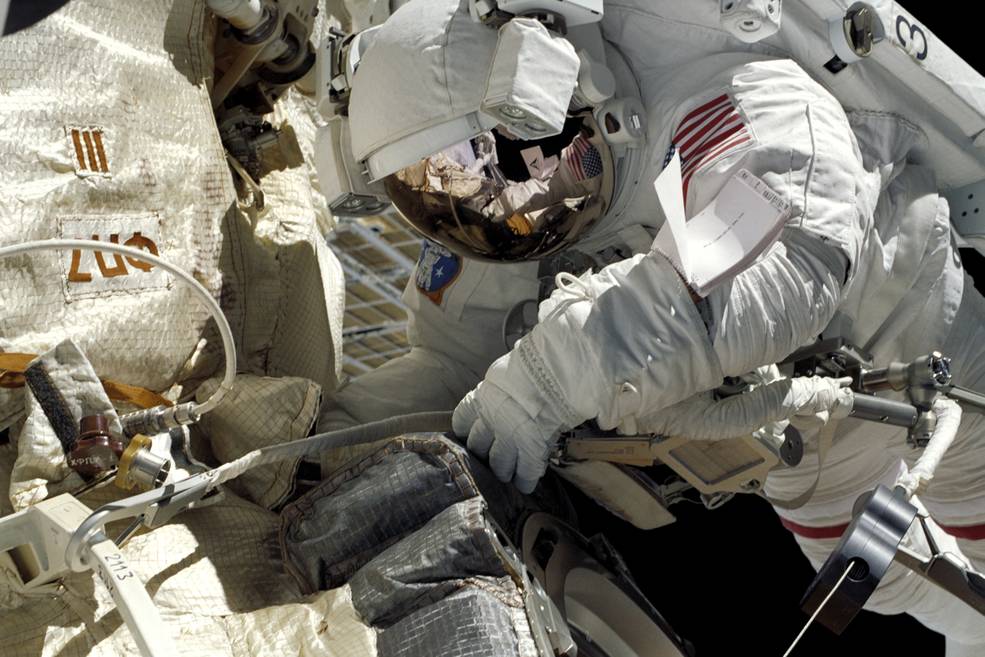
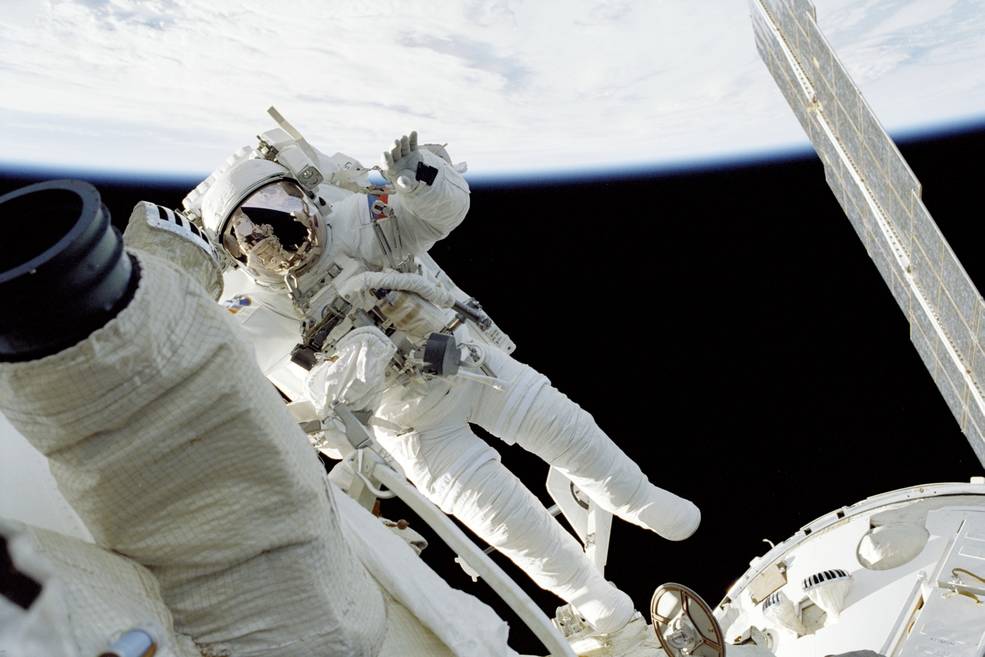
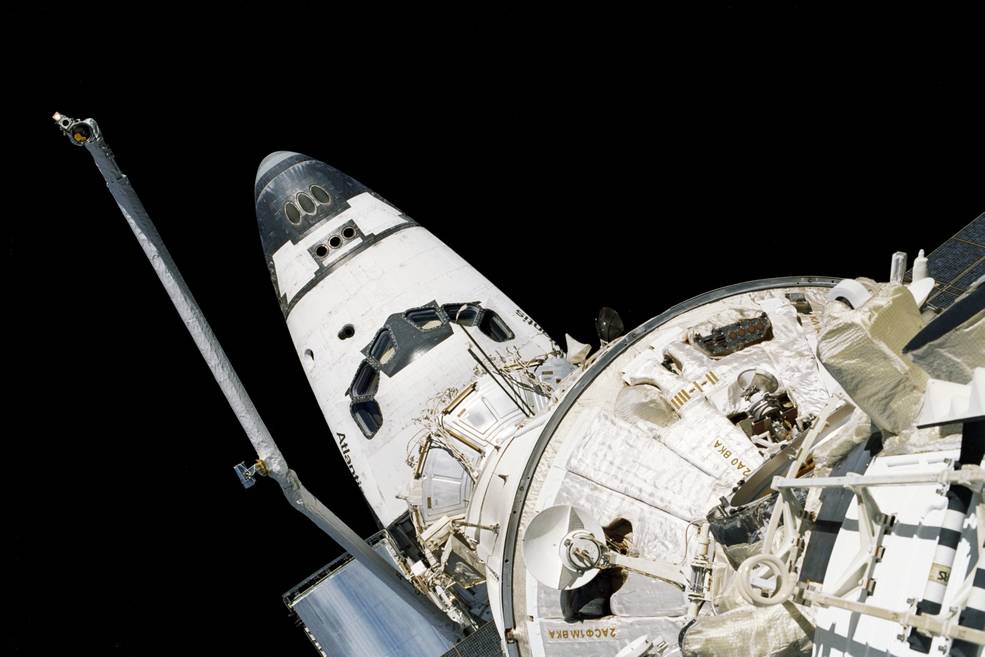
Left: Lu during the STS-106 EVA. Middle: Malenchenko during the STS-106 EVA.
Right: View of Zarya and Atlantis taken by an EVA crewmember while working on Zvezda’s exterior.
The day after the EVA, the crew opened the hatches to ISS, entering Zvezda for the first time, and began the internal outfitting work. Over the next five days, they transferred more than 6,000 pounds of supplies from the double Spacehab module to ISS including six water bags, all the food for the first expedition, office supplies, medical equipment, and other essential items. They also unloaded 1,300 pounds of supplies from the Progress, including clothing, medical kits, a vacuum cleaner, and laptops. Also stowed aboard the Progress were the Elektron oxygen generation system and the Vozdukh carbon dioxide removal system, which the crew installed aboard Zvezda. In addition, they installed several batteries, a treadmill, and the toilet, and removed launch locks from equipment to make them more readily accessible.
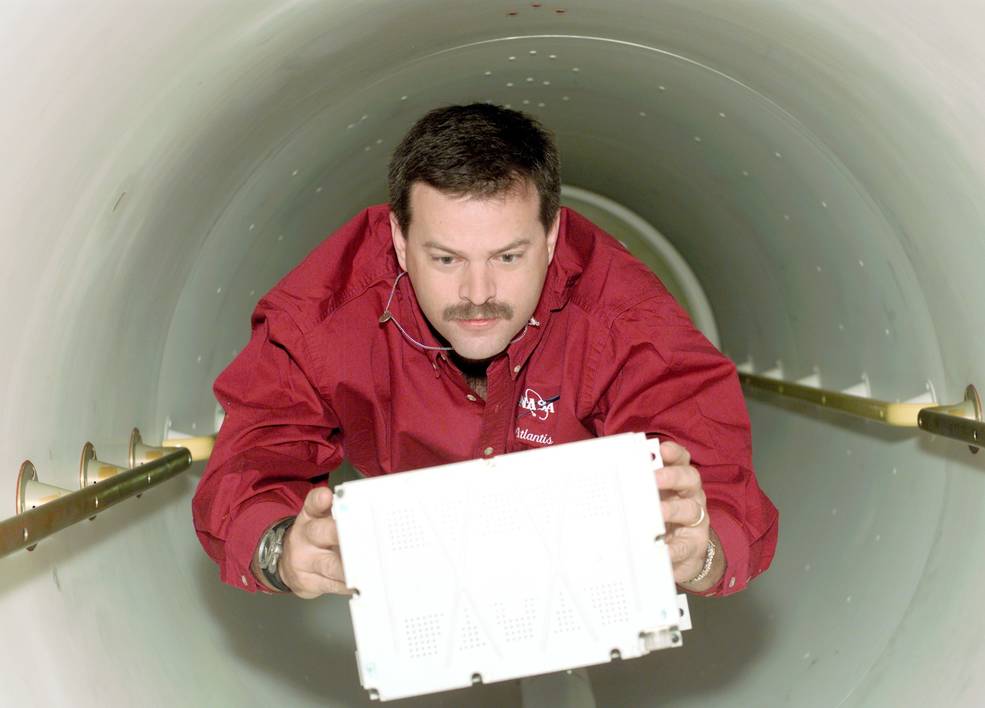
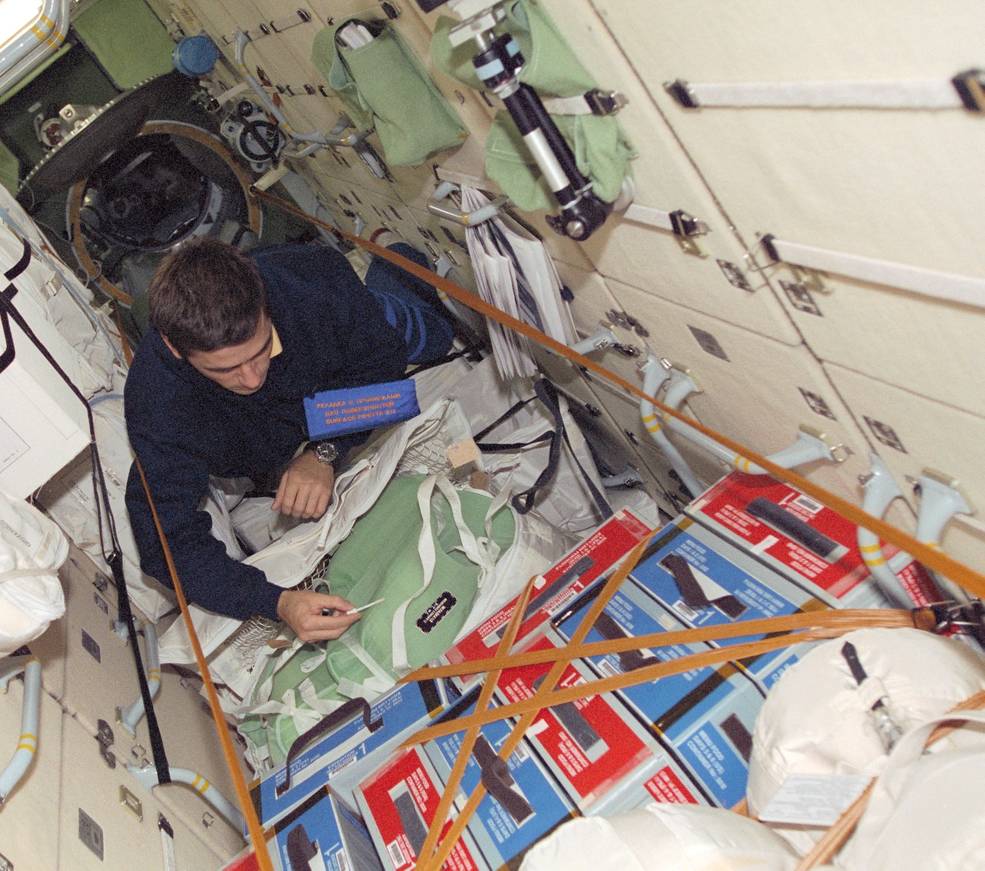

Left: Altman carrying a battery through the transfer tunnel from the Spacehab module.
Middle: Malenchenko checking stowage in Zarya, with food containers in the foreground.
Right: Morukov, left, and Malenchenko at work in the Progress cargo vehicle.
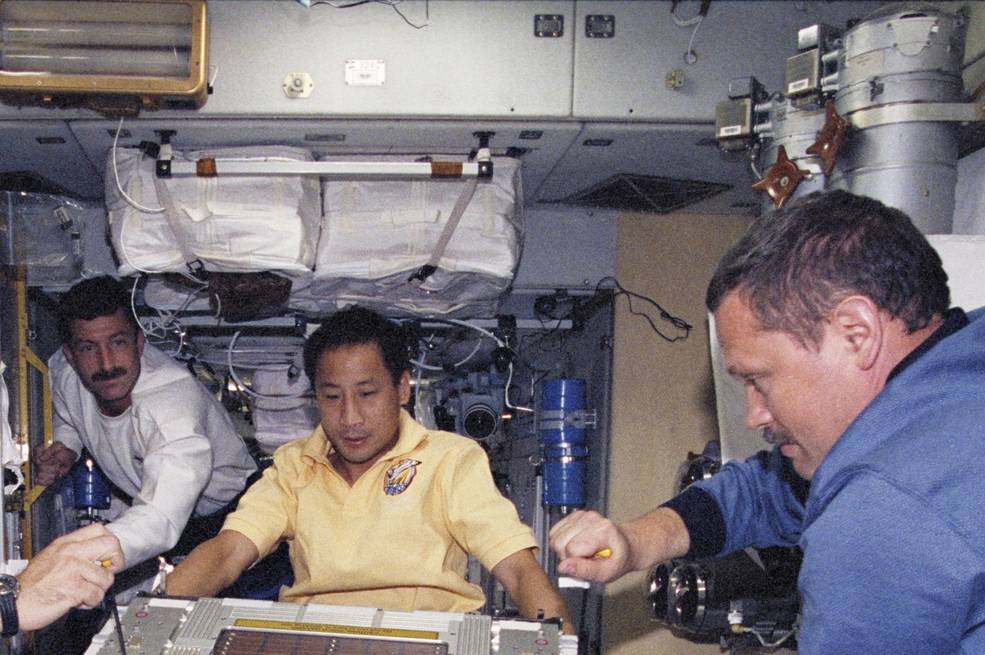
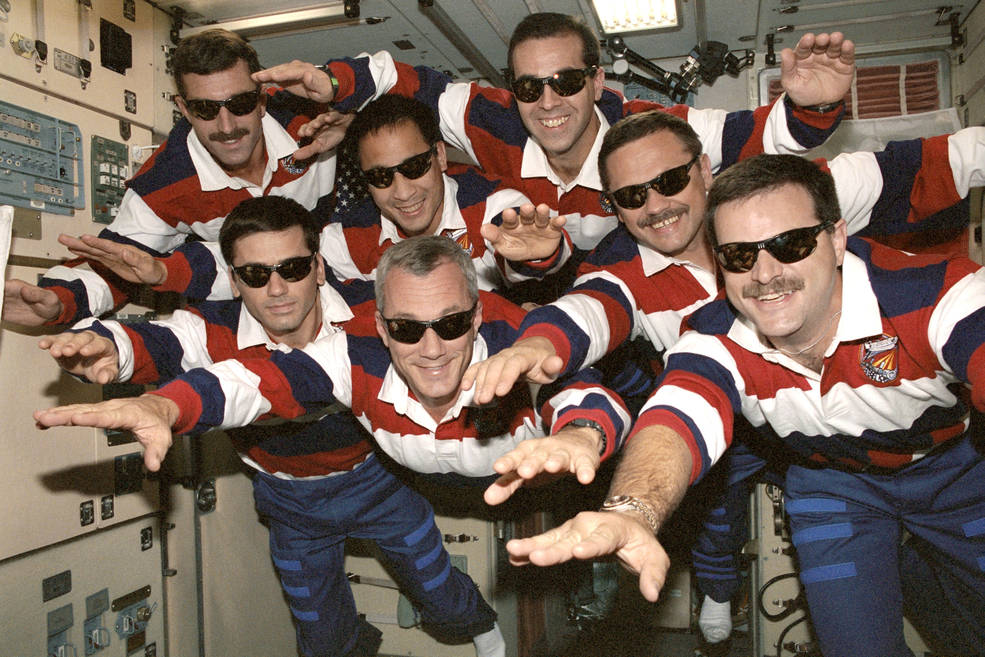
Left: Burbank, left, Lu, and Morukov install the treadmill in Zvezda.
Right: Their work finished, the STS-106 crew pose in Zvezda.
The ISS research program had its very modest beginnings with the STS-106 mission. The flight carried the first three experiments – one was transferred to ISS to be returned on the next shuttle flight, the second was transferred to ISS and stowed to be operated by the Expedition 1 crew, and the third stayed in the shuttle’s middeck as a sortie payload. The Protein Crystal Growth-Enhanced Gaseous Nitrogen (PCG-EGN) Dewar was a passive experiment containing hundreds of flash-frozen samples of protein solutions. Once transferred to a quiescent location in Zarya, the samples thawed over time and the proteins crystallized out of solution. The experiment was returned on the next shuttle mission, STS-92, in October 2000. The Middeck Active Control Experiment-II (MACE-II), designed to provide data on decreasing the effects of vibration on moving structures in space, was flown as passive stowage and transferred to Unity, to be operated by the Expedition 1 crew after their arrival. The single-locker sized Commercial Generic Bioprocessing Apparatus (CGBA) remained in the middeck throughout the flight and contained two experiments. The first looked at how spaceflight affects the nervous system in fruit flies, a commonly studied laboratory species, and the second studied the effects of spaceflight on gene expression in cultured kidney cells.
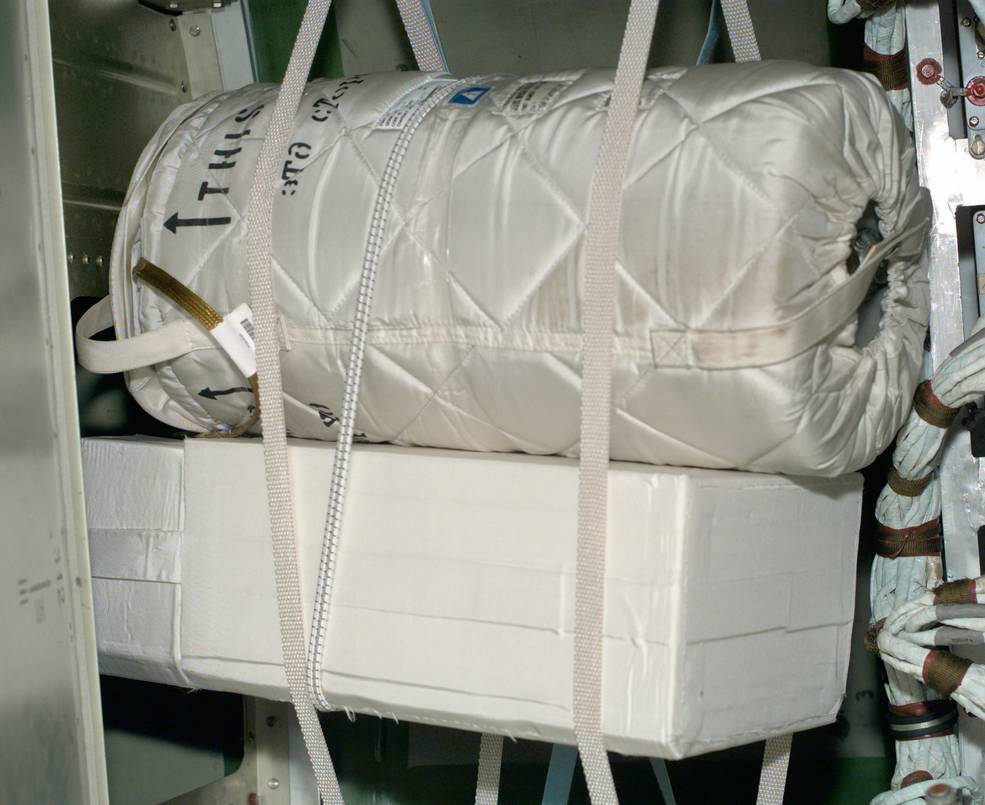
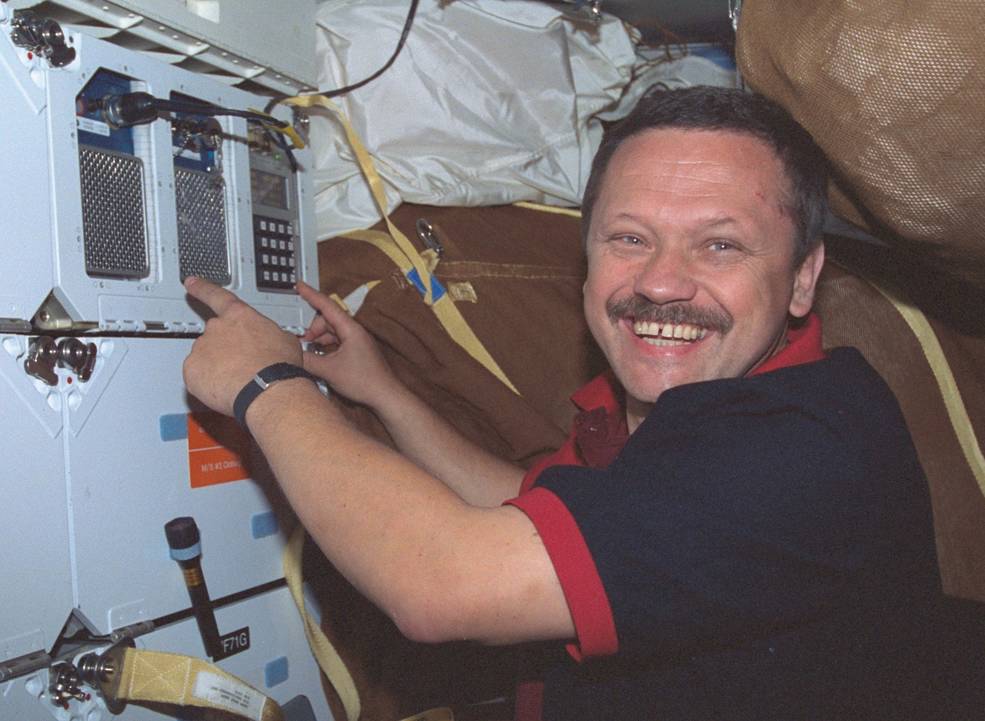
Left: The PCG-EGN experiment stowed in the Zarya module.
Right: Morukov tending to the CGBA in the shuttle middeck.
With Altman at the controls, Atlantis undocked from ISS on Sept. 18 and completed a fly around of the refurbished station, with the crew taking photographs to document its condition. Although externally ISS was not dramatically different from when they arrived eight days earlier, internally the modifications the STS-106 crewmembers completed meant that ISS was ready to welcome it first crew. On Sept. 20, they closed Atlantis’ payload bay doors, put on their launch and entry suits, strapped into their seats and fired the shuttle’s engines for the trip back to Earth. Wilcutt guided Atlantis to a smooth night landing on the Shuttle Landing Facility at Kennedy Space Center, ending a highly successful 12-day mission to prepare ISS for its first occupants.
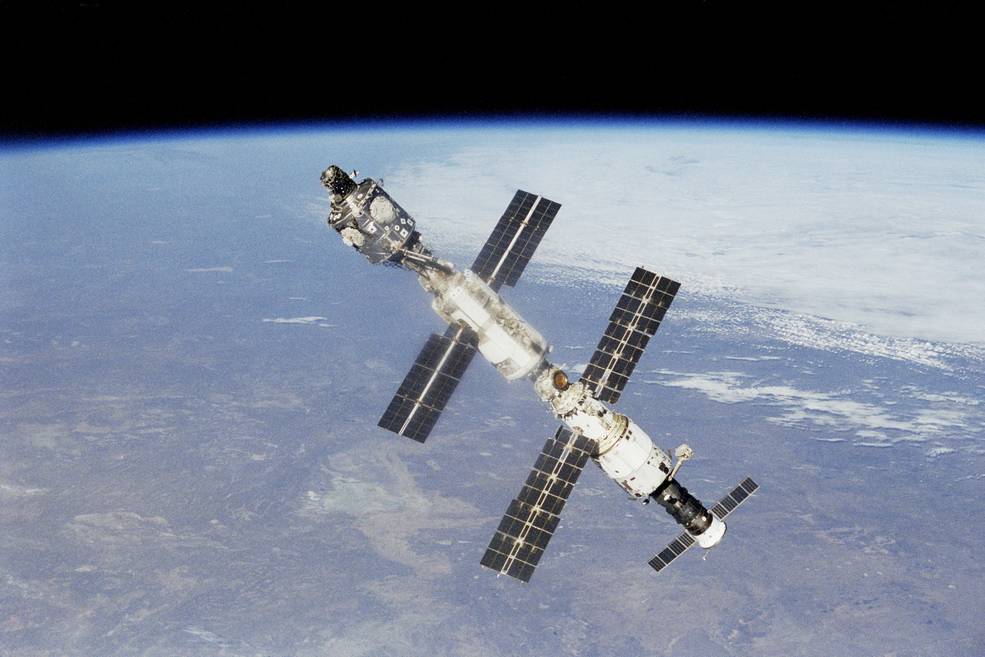
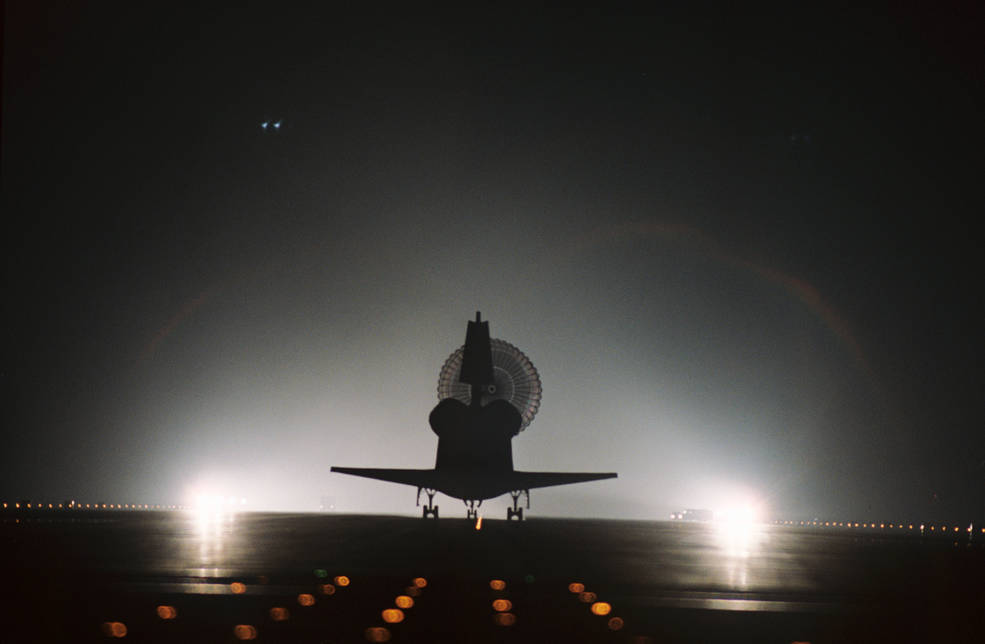
Left: A refurbished ISS as seen from Atlantis during its departure.
Right: Atlantis makes a smooth night landing at Kennedy Space Center.
Enjoy the crew narrate a video about the STS-106 mission.






























